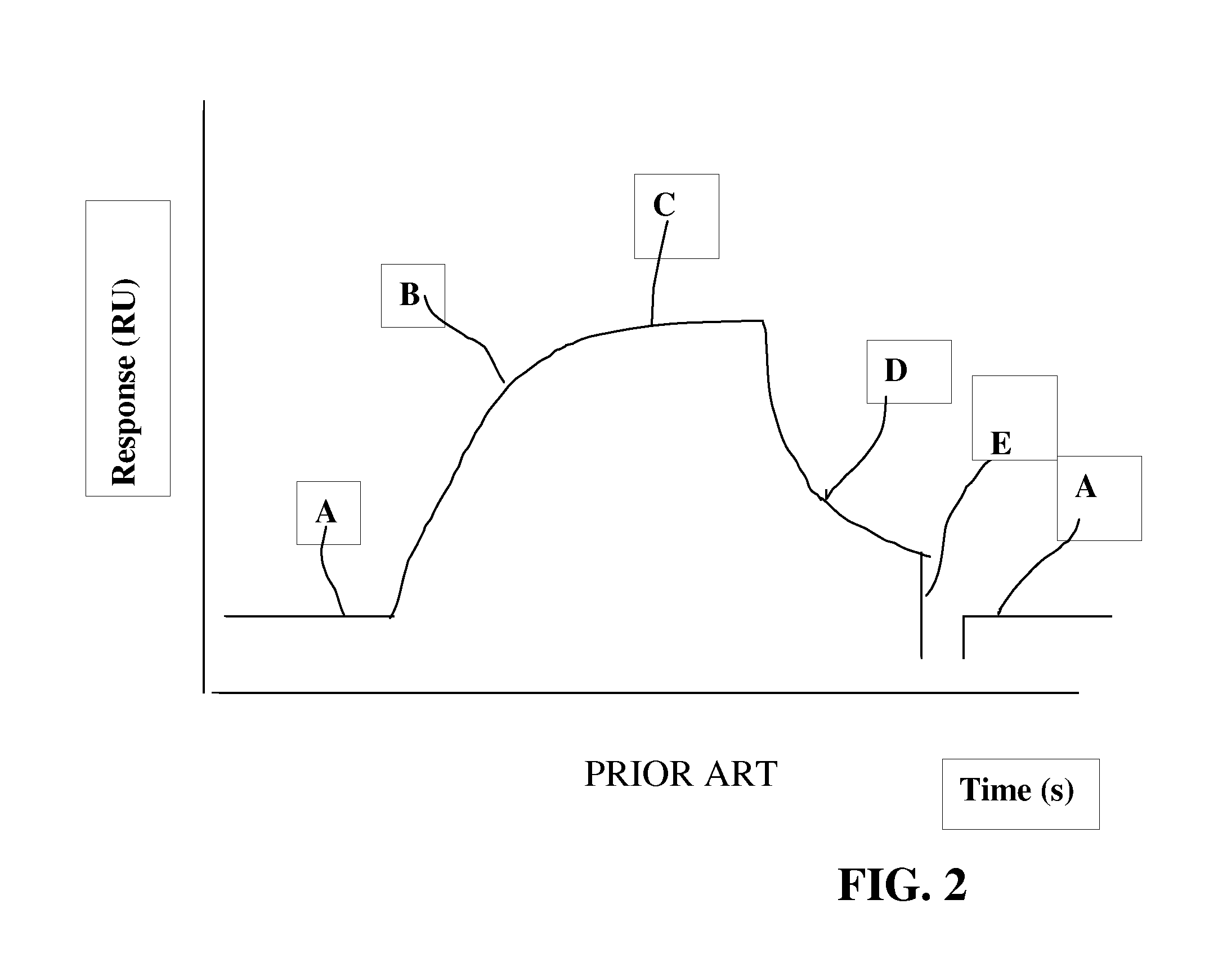Method of characterizing antibodies
a technology of antibody and antibody characterization, applied in the field of antibody characterization, can solve the problems of unwanted immune reaction, reduced or complete neutralization, undesirable side effects,
- Summary
- Abstract
- Description
- Claims
- Application Information
AI Technical Summary
Problems solved by technology
Method used
Image
Examples
example 1
Binding Stability Analysis on Surface with Low Ligand Density
[0061]A model system consisting of beta-2-microglobulin as ligand and a polyclonal anti-beta-2-microglobulin antibody as analyte was used. Beta-2-microglobulin was immobilized on sensor chip CM5 using Amine Coupling Kit (GE Healthcare, Uppsala, Sweden) according to the manufacturer's instructions. The immobilization was performed in the presence of ethanolamine to obtain a sufficiently low ligand density.
[0062]The analysis was performed in the BIACORE® T100 instrument including “Immunogenicity Package” software.
[0063]Five different concentrations of the polyclonal antibody diluted in HBS-EP+ were used: 5, 10, 25, 50 and 100 μg / ml. Two different injection times were tested, 60 and 90 seconds, respectively, while the dissociation time was held constant to 600 seconds. The analysis was performed with the instrument's “Method Builder” support and comprised four assay steps.
Assay Step1 5-100 μg / ml, injection for 60 s
Assay Step ...
PUM
| Property | Measurement | Unit |
|---|---|---|
| dissociation | aaaaa | aaaaa |
| dissociation rate constants | aaaaa | aaaaa |
| areas | aaaaa | aaaaa |
Abstract
Description
Claims
Application Information
 Login to View More
Login to View More - R&D
- Intellectual Property
- Life Sciences
- Materials
- Tech Scout
- Unparalleled Data Quality
- Higher Quality Content
- 60% Fewer Hallucinations
Browse by: Latest US Patents, China's latest patents, Technical Efficacy Thesaurus, Application Domain, Technology Topic, Popular Technical Reports.
© 2025 PatSnap. All rights reserved.Legal|Privacy policy|Modern Slavery Act Transparency Statement|Sitemap|About US| Contact US: help@patsnap.com



